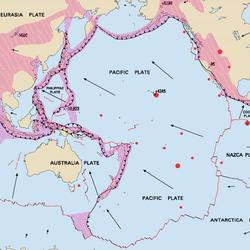Earthquakes occur in various parts of the world due to the movement of tectonic plates beneath the Earth's surface. However, some regions experience fewer earthquakes or have lower seismic activity compared to others. It's essential to note that no place on Earth is entirely immune to earthquakes, but certain areas have relatively lower seismicity. Here are some regions where earthquakes are less frequent:
1. Interior of Continents: Regions located far away from tectonic plate boundaries typically experience fewer earthquakes. These areas are often situated in the interiors of continents, away from plate boundaries where most seismic activity occurs. Examples include the central parts of cntinents like North America, South America, Europe, and Asia.
2. Continental Shields: Continental shields are ancient, stable regions of continental crust that have undergone minimal tectonic activity for millions of years. These areas are generally located in the interiors of continents and have thick, stable crust. Examples include the Canadian Shield in North America and the Brazilian Shield in South America.
3. Northern Canada and Siberia: The northern regions of Canada and Siberia experience relatively low seismic activity compared to other parts of the world. These areas are characterized by thick continental crust and are located away from active plate boundaries.
4. Antarctica: Antarctica is a continent covered by thick ice, and it experiences fewer earthquakes compared to other regions. However, seismic monitoring in Antarctica is limited due to its remote and harsh environment.
5. Deserts: Some deserts, such as the Sahara Desert in Africa or the Australian Outback, experience fewer earthquakes due to their stable geological conditions. These regions are often characterized by ancient, stable crust with minimal tectonic activity.
6. Deep Ocean Basins: The deep ocean basins, such as the central Pacific Ocean, generally experience fewer earthquakes compared to areas near tectonic plate boundaries. However, seismic activity can still occur in these regions, particularly along mid-ocean ridges or subduction zones.
While these regions may have lower seismic activity compared to areas near tectonic plate boundaries, it's essential to recognize that earthquakes can still occur, albeit less frequently. Additionally, advancements in seismic monitoring and research continue to improve our understanding of seismic hazards worldwide. Therefore, even in regions with historically low seismic activity, it's crucial to remain prepared for potential earthquake events.


একটি মন্তব্য পোস্ট করুন